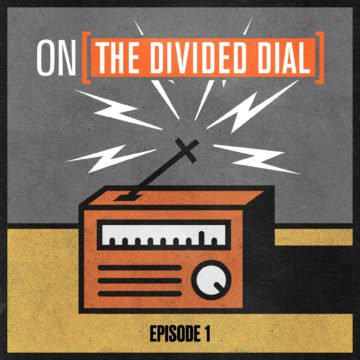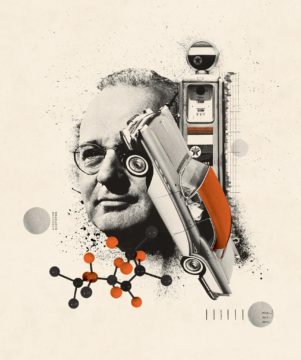Category: Recommended Reading
Bald Eagles and the Americans Who Killed What They Revere
Joan E. Strassmann in The Common Reader:
 There are three main themes to this book. First, people revered eagles and used them and their images to define their group, be it native or settler. Second, people killed bald eagles by the thousands, nearly wiping out this magnificent bird, a job that DDT practically completed. The third theme is redemption and shows the efforts some people are making to rescue our emblematic bird.
There are three main themes to this book. First, people revered eagles and used them and their images to define their group, be it native or settler. Second, people killed bald eagles by the thousands, nearly wiping out this magnificent bird, a job that DDT practically completed. The third theme is redemption and shows the efforts some people are making to rescue our emblematic bird.
The first chapter, Searching for a Seal, was one of my favorites because of the way it showed the development of something that seems so timeless, the seal of the United States, the seal that is on every podium, every official banner, and every dollar bill. Now it seems almost inevitable, but there were several other contenders that might have prevailed. Our great seal shows a bald eagle looking left holding in its bill a ribbon that says E Pluribus Unum, from many one. But you know the rest of the image or can easily pull it out of your wallet.
More here.
Bill Gates: ‘I Worry We’re Making the Same Mistakes Again’
Bill Gates in the New York Times:
 Imagine there’s a small fire in your kitchen. Your fire alarm goes off, warning everyone nearby about the danger. Someone calls 911. You try to put the fire out yourself — maybe you even have a fire extinguisher under the sink. If that doesn’t work, you know how to safely evacuate. By the time you get outside, a fire truck is already pulling up. Firefighters use the hydrant in front of your house to extinguish the flames before any of your neighbors’ homes are ever at risk of catching fire.
Imagine there’s a small fire in your kitchen. Your fire alarm goes off, warning everyone nearby about the danger. Someone calls 911. You try to put the fire out yourself — maybe you even have a fire extinguisher under the sink. If that doesn’t work, you know how to safely evacuate. By the time you get outside, a fire truck is already pulling up. Firefighters use the hydrant in front of your house to extinguish the flames before any of your neighbors’ homes are ever at risk of catching fire.
We need to prepare to fight disease outbreaks just as we prepare to fight fires. If a fire is left to burn out of control, it poses a threat not only to one home but to an entire community. The same is true for infectious diseases, except on a much bigger scale. As we know all too well from Covid, an outbreak in one town can quickly spread across an entire country and then around the world.
When the World Health Organization first described Covid-19 as a pandemic just over three years ago, it marked the culmination of a collective failure to prepare for pandemics, despite many warnings. And I worry that we’re making the same mistakes again.
More here.
Revisiting America’s War of Choice in Iraq
Richard Haass in Project Syndicate:
 Whatever progress had been made in Afghanistan after the US invaded and removed the Taliban government that had provided a safe haven to the al-Qaeda terrorists who planned and carried out the 9/11 attacks, it was deemed inadequate. Many in the Bush administration were motivated by a desire to bring democracy to the entire Middle East, and Iraq was viewed as the ideal country to set the transition in motion. Democratization there would set an example that others across the region would be unable to resist following. And Bush himself wanted to do something big and bold.
Whatever progress had been made in Afghanistan after the US invaded and removed the Taliban government that had provided a safe haven to the al-Qaeda terrorists who planned and carried out the 9/11 attacks, it was deemed inadequate. Many in the Bush administration were motivated by a desire to bring democracy to the entire Middle East, and Iraq was viewed as the ideal country to set the transition in motion. Democratization there would set an example that others across the region would be unable to resist following. And Bush himself wanted to do something big and bold.
I should make clear that I was part of the administration at the time, as the head of the Department of State’s Policy Planning staff. Like virtually all my colleagues, I thought Saddam Hussein possessed WMDs, namely chemical and biological weapons. Even so, I did not favor going to war.
More here.
The Long Story of How Neural Nets Got to Where They Are: Stephen Wolfram interviews Terry Sejnowski
Wednesday Poem
The Return
He doesn’t know it yet, but when my father
and I return there, it will be forever.
His antihypertensives thrown away,
his briefcase in the attic left to waste,
the football game turned off—he’s snoring now,
he doesn’t even dream it, but I know
I’ll carry him the way he carried me
when I was small: in 2023,
my father’s shrunken, eighty-five years old,
weighs ninety pounds, a little dazed but thrilled
that Castro’s long been dead, his son impeached!
He doesn’t know it, dozing on the couch
across the family room from me, but this
is what I’ve dreamed of giving him, just this.
And I carry him upon my shoulders,
triumphant strides across the beach so golden
I want to cry, that’s when he sees for sure,
he sees he’s needed me for all these years.
He doesn’t understand it yet, but when
I give him Cuba, he will love me then.
by Raphael Campo
from El Coro
University of Massachusetts Press, 1997
We need the right kind of climate optimism
Hannah Ritchie in Vox:
 We environmentalists spend our lives thinking about ways the world will end. There’s nowhere that I see doomer culture more vocal than on my home turf.
We environmentalists spend our lives thinking about ways the world will end. There’s nowhere that I see doomer culture more vocal than on my home turf.
With leading activists like Roger Hallam, co-founder of the popular climate protest movement Extinction Rebellion, telling young people that they “face annihilation,” it’s no surprise so many of them feel terrified. In a large recent international survey on youth attitudes toward climate change, more than half said that “humanity is doomed” and three-quarters said the future is frightening. Young people have good reasons to worry about our ability to tackle climate change, but this level of despair should be alarming to anyone who cares about the well-being of future generations — which is, after all, what the climate movement is all about.
More here.
Fruit flies are first known animals that can taste alkaline foods
Smriti Mallapaty in Nature:
 Researchers have discovered an entirely new kind of taste receptor that allows fruit flies (Drosophila melanogaster) to detect alkaline substances — those that have a high pH — and avoid toxic meals and surfaces. Finding a new taste receptor in such a well-studied animal is unexpected, says Emily Liman, a neurobiologist at the University of Southern California in Los Angeles. “I found it quite surprising that there is this whole new type of taste,” says Liman. “It is really beautiful work.” The discovery, published in Nature Metabolism this week1, could “potentially inform future research into the physiological mechanisms underlying alkaline taste in other organisms”, says Lai Ren, a biochemist at the Kunming Institute of Zoology at the Chinese Academy of Sciences.
Researchers have discovered an entirely new kind of taste receptor that allows fruit flies (Drosophila melanogaster) to detect alkaline substances — those that have a high pH — and avoid toxic meals and surfaces. Finding a new taste receptor in such a well-studied animal is unexpected, says Emily Liman, a neurobiologist at the University of Southern California in Los Angeles. “I found it quite surprising that there is this whole new type of taste,” says Liman. “It is really beautiful work.” The discovery, published in Nature Metabolism this week1, could “potentially inform future research into the physiological mechanisms underlying alkaline taste in other organisms”, says Lai Ren, a biochemist at the Kunming Institute of Zoology at the Chinese Academy of Sciences.
Most animals function in a narrow pH range, which makes sensing acids and bases important for their survival. Studies in the past few decades have detailed the receptors, cells and neural circuits involved in detecting sour and acidic tastes2, which occur at low pH, but sensing alkaline substances is not well understood, says Lai. Some early work in people3 and cats4 suggests — but does not prove — that the alkaline sensation could be a type of taste, he adds.
More here.
Tuesday, March 21, 2023
The Exile of Oscar Wilde, Dublin’s Charming Ghost
Alexander Poots in Literary Hub:
 When still a boy, Forrest Reid saw Oscar Wilde in Belfast.
When still a boy, Forrest Reid saw Oscar Wilde in Belfast.
I beheld my first celebrity. Not that I knew him to be celebrated, but I could see for myself his appearance was remarkable. I had been taught that it was rude to stare, but on this occasion, though I was with my mother, I could not help staring, and even feeling I was intended to do so. He was, my mother told me, a Mr. Oscar Wilde.
Reid presents his boyhood sighting of the famous writer as little more than a curious anecdote. He was 20 years old in 1895, the year of the Wilde Affair. In early April of that year, the newspapers were full of Wilde’s lawsuit against the Marquess of Queensberry. Just a few weeks later, the papers were full of Wilde’s fall from grace. He became a byword for infamy in England and Ireland. Worst of all, his very name became a slur.
Reid lived through it all. The man he had seen promenading through Belfast was now circling a prison yard. How did they make him feel, those broadsheets at the breakfast table? Perhaps they frightened him. An unwelcome premonition of his own future. Desire reduced to commerce, letters sent and regretted, a life spent waiting for the blackmailer’s note or the policeman’s knock. And yet even then Reid must have known that his life, queer fellow though he was, would not take that shape. Wilde’s passions were shallower than Reid’s, and much more dangerous.
More here.
Sean Carroll’s Mindscape Podcast: Raphaël Millière on How Artificial Intelligence Thinks
Sean Carroll in Preposterous Universe:
 Welcome to another episode of Sean Carroll’s Mindscape. Today, we’re joined by Raphaël Millière, a philosopher and cognitive scientist at Columbia University. We’ll be exploring the fascinating topic of how artificial intelligence thinks and processes information. As AI becomes increasingly prevalent in our daily lives, it’s important to understand the mechanisms behind its decision-making processes. What are the algorithms and models that underpin AI, and how do they differ from human thought processes? How do machines learn from data, and what are the limitations of this learning? These are just some of the questions we’ll be exploring in this episode. Raphaël will be sharing insights from his work in cognitive science, and discussing the latest developments in this rapidly evolving field. So join us as we dive into the mind of artificial intelligence and explore how it thinks.
Welcome to another episode of Sean Carroll’s Mindscape. Today, we’re joined by Raphaël Millière, a philosopher and cognitive scientist at Columbia University. We’ll be exploring the fascinating topic of how artificial intelligence thinks and processes information. As AI becomes increasingly prevalent in our daily lives, it’s important to understand the mechanisms behind its decision-making processes. What are the algorithms and models that underpin AI, and how do they differ from human thought processes? How do machines learn from data, and what are the limitations of this learning? These are just some of the questions we’ll be exploring in this episode. Raphaël will be sharing insights from his work in cognitive science, and discussing the latest developments in this rapidly evolving field. So join us as we dive into the mind of artificial intelligence and explore how it thinks.
[The above introduction was artificially generated by ChatGPT.]
More here.
Another Predictable Bank Failure
Joseph Stiglitz in Project Syndicate:
 The run on Silicon Valley Bank (SVB) – on which nearly half of all venture-backed tech start-ups in the United States depend – is in part a rerun of a familiar story, but it’s more than that. Once again, economic policy and financial regulation has proven inadequate.
The run on Silicon Valley Bank (SVB) – on which nearly half of all venture-backed tech start-ups in the United States depend – is in part a rerun of a familiar story, but it’s more than that. Once again, economic policy and financial regulation has proven inadequate.
The news about the second-biggest bank failure in US history came just days after Federal Reserve Chair Jerome Powell assured Congress that the financial condition of America’s banks was sound. But the timing should not be surprising. Given the large and rapid increases in interest rates Powell engineered – probably the most significant since former Fed Chair Paul Volcker’s interest-rate hikes of 40 years ago – it was predicted that dramatic movements in the prices of financial assets would cause trauma somewhere in the financial system.
But, again, Powell assured us not to worry – despite abundant historical experience indicating that we should be worried. Powell was part of former President Donald Trump’s regulatory team that worked to weaken the Dodd-Frank bank regulations enacted after the 2008 financial meltdown, in order to free “smaller” banks from the standards applied to the largest, systemically important, banks. By the standards of Citibank, SVB is small. But it’s not small in the lives of the millions who depend on it.
More here.
OpenAI CEO, CTO on risks and how AI will reshape society
Marshall Islands Wave Charts
Amelia Soth at JSTOR Daily:
 Wave charts aren’t maps so much as mnemonic devices. They’re not brought on board in order to navigate; rather, the navigator makes them as a personal reference, studying them while on land and bringing that knowledge onto the sea. There were a few different kinds: rebbelib, which represented whole island chains; meddo, which showed ocean swell patterns in a smaller area; and mattang, simple teaching tools used to diagram the basic interactions between land and sea.
Wave charts aren’t maps so much as mnemonic devices. They’re not brought on board in order to navigate; rather, the navigator makes them as a personal reference, studying them while on land and bringing that knowledge onto the sea. There were a few different kinds: rebbelib, which represented whole island chains; meddo, which showed ocean swell patterns in a smaller area; and mattang, simple teaching tools used to diagram the basic interactions between land and sea.
While this particular mode of proprioceptive navigation was unique to the Marshall Islands, navigators throughout Micronesia and Polynesia used swells to orient themselves, along with other methods. To those who knew how to read it, the sea is full of signs: driftwood gathers at convergence zones; specific birds appear only near land; distant forests cast a greenish tint on the underbellies of the clouds above. As they traveled, songs helped to keep time, remind the sailors of important landmarks, and confer ritual protection on the voyagers.
more here.
Courting India: England, Mughal India and the Origins of Empire
Lucy Moore at Literary Review:
 Pity Sir Thomas Roe. He was sent to India in February 1615 by James I as the first English ambassador to the fabulously glamorous Mughal court – a privilege and an extraordinary opportunity, one might think. But diplomats in the 17th century, in Europe at least, were woefully underpaid and were expected to make up any shortfall out of their own pockets in anticipation of a refund on their return. The amount reimbursed was at the whim of the monarch, who might be grateful for their years of travail but might just as easily be disappointed or no longer interested. It is a measure of their unrealistic expectations that the East India Company, formed only fifteen years before Roe set off on the hazardous six-month voyage to India and partial sponsors of his expedition, imagined that the ‘Grand Mogore’ might be persuaded to give Roe an allowance, enabling him to return their investment in him.
Pity Sir Thomas Roe. He was sent to India in February 1615 by James I as the first English ambassador to the fabulously glamorous Mughal court – a privilege and an extraordinary opportunity, one might think. But diplomats in the 17th century, in Europe at least, were woefully underpaid and were expected to make up any shortfall out of their own pockets in anticipation of a refund on their return. The amount reimbursed was at the whim of the monarch, who might be grateful for their years of travail but might just as easily be disappointed or no longer interested. It is a measure of their unrealistic expectations that the East India Company, formed only fifteen years before Roe set off on the hazardous six-month voyage to India and partial sponsors of his expedition, imagined that the ‘Grand Mogore’ might be persuaded to give Roe an allowance, enabling him to return their investment in him.
Roe’s mission on behalf of the king and the East India Company was to establish a special relationship with the Mughals, who were already dealing with Portuguese and Dutch merchantmen.
more here.
Theory of Mind Breakthrough: AI Consciousness & Disagreements at OpenAI
Tuesday Poem
Alejandros
Alejandros stands in the garden.
There are tears
for miles, and inky cherubs everywhere.
My addictions to the ocean and to lies.
Alejandro looks at me. He is the marionette of AndalucÃa. He is the sea.
The Alejandros heave and sound the drum-roll of ancient civilizations.
Somewhere inside me he clobbers a beast and I tend to a child. Somewhere
inside me I clobber a beast and he is a child,
and there was my childhood,
my knobby knees; the need to be beautiful,
and there laid the collateral of my life,
weaknesses in me that smelled like the Mediterranean
You don’t need a sea to be happy
do you?
by Lisa Marie Basile
from Pank Magazine
‘The Divided Dial’ examines how right-wing radio spreads misinformation
From NPR:
 A recent podcast series digs into the beginnings of conservative talk radio and tracks its rise. NPR’s Steve Inskeep talks to Katie Thornton, the host of “The Divided Dial.”
A recent podcast series digs into the beginnings of conservative talk radio and tracks its rise. NPR’s Steve Inskeep talks to Katie Thornton, the host of “The Divided Dial.”
STEVE INSKEEP, HOST:
Before the attack on the U.S. Capitol in 2021, a talk radio host was on the air. Eric Metaxas interviewed a man who denied the presidential election results and who in turn got a call from Donald Trump.
(SOUNDBITE OF RADIO SHOW, “THE ERIC METAXAS SHOW”)
ERIC METAXAS: Mr. President, I want to know, what can I do…
DONALD TRUMP: Fantastic. Your whole show and your whole deal is great. So just keep it up. We’re making a lot of progress, actually.
INSKEEP: The talk show host said he was willing to die for the cause. Another host on the same network, Charlie Kirk, fired up listeners on January 4.
More here.
The Brilliant Inventor Who Made Two of History’s Biggest Mistakes
Steven Johnson in The New York Times:
 It was said that Thomas Midgley Jr. had the finest lawn in America. Golf-club chairmen from across the Midwest would visit his estate on the outskirts of Columbus, Ohio, purely to admire the grounds; the Scott Seed Company eventually put an image of Midgley’s lawn on its letterhead. Midgley cultivated his acres of grass with the same compulsive innovation that characterized his entire career. He installed a wind gauge on the roof that would sound an alarm in his bedroom, alerting him whenever the lawn risked being desiccated by a breeze. Fifty years before the arrival of smart-home devices, Midgley wired up the rotary telephone in his bedroom so that a few spins of the dial would operate the sprinklers.
It was said that Thomas Midgley Jr. had the finest lawn in America. Golf-club chairmen from across the Midwest would visit his estate on the outskirts of Columbus, Ohio, purely to admire the grounds; the Scott Seed Company eventually put an image of Midgley’s lawn on its letterhead. Midgley cultivated his acres of grass with the same compulsive innovation that characterized his entire career. He installed a wind gauge on the roof that would sound an alarm in his bedroom, alerting him whenever the lawn risked being desiccated by a breeze. Fifty years before the arrival of smart-home devices, Midgley wired up the rotary telephone in his bedroom so that a few spins of the dial would operate the sprinklers.
In the fall of 1940, at age 51, Midgley contracted polio, and the dashing, charismatic inventor soon found himself in a wheelchair, paralyzed from the waist down. At first he took on his disability with the same ingenuity that he applied to maintaining his legendary lawn, analyzing the problem and devising a novel solution to it — in this case, a mechanized harness with pulleys attached to his bed, allowing him to clamber into his wheelchair each morning without assistance. At the time, the contraption seemed emblematic of everything Midgley had stood for in his career as an inventor: determined, innovative thinking that took on a seemingly intractable challenge and somehow found a way around it.
Or at least it seemed like that until the morning of Nov. 2, 1944, when Midgley was found dead in his bedroom. The public was told he had been accidentally strangled to death by his own invention. Privately, his death was ruled a suicide. Either way, the machine he designed had become the instrument of his death.
More here.
Sunday, March 19, 2023
The Problem with English
Mario Saraceni in Aeon:
 English may have become universal, but not everyone believes it is a gift. In fact, many hold diametrically opposite views. In an article in The Guardian in 2018, the journalist Jacob Mikanowski described English as a ‘behemoth, bully, loudmouth, thief’, highlighting that the dominance of English threatens local cultures and languages. Due to the ways in which English continues to gain ground worldwide, many languages are becoming endangered or extinct. This not only impacts relatively small languages like Welsh or Irish, but also larger languages, such as Yoruba in Nigeria, which are pressured by English in business, trade, education, the media and technology.
English may have become universal, but not everyone believes it is a gift. In fact, many hold diametrically opposite views. In an article in The Guardian in 2018, the journalist Jacob Mikanowski described English as a ‘behemoth, bully, loudmouth, thief’, highlighting that the dominance of English threatens local cultures and languages. Due to the ways in which English continues to gain ground worldwide, many languages are becoming endangered or extinct. This not only impacts relatively small languages like Welsh or Irish, but also larger languages, such as Yoruba in Nigeria, which are pressured by English in business, trade, education, the media and technology.
For this reason, a number of scholars in the field of sociolinguistics consider English a killer language and have described it as a kind of monster, like the deadly multi-headed Hydra from Greek mythology.
More here.
The Unpredictable Abilities Emerging From Large AI Models
Stephen Ornes in Quanta:
 Recent investigations like the one Dyer worked on have revealed that LLMs can produce hundreds of “emergent” abilities — tasks that big models can complete that smaller models can’t, many of which seem to have little to do with analyzing text. They range from multiplication to generating executable computer code to, apparently, decoding movies based on emojis. New analyses suggest that for some tasks and some models, there’s a threshold of complexity beyond which the functionality of the model skyrockets. (They also suggest a dark flip side: As they increase in complexity, some models reveal new biases and inaccuracies in their responses.)
Recent investigations like the one Dyer worked on have revealed that LLMs can produce hundreds of “emergent” abilities — tasks that big models can complete that smaller models can’t, many of which seem to have little to do with analyzing text. They range from multiplication to generating executable computer code to, apparently, decoding movies based on emojis. New analyses suggest that for some tasks and some models, there’s a threshold of complexity beyond which the functionality of the model skyrockets. (They also suggest a dark flip side: As they increase in complexity, some models reveal new biases and inaccuracies in their responses.)
“That language models can do these sort of things was never discussed in any literature that I’m aware of,” said Rishi Bommasani, a computer scientist at Stanford University. Last year, he helped compile a list of dozens of emergent behaviors, including several identified in Dyer’s project. That list continues to grow.
More here.
